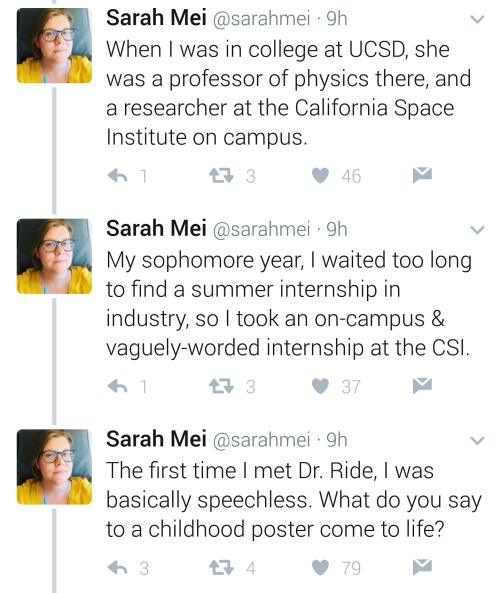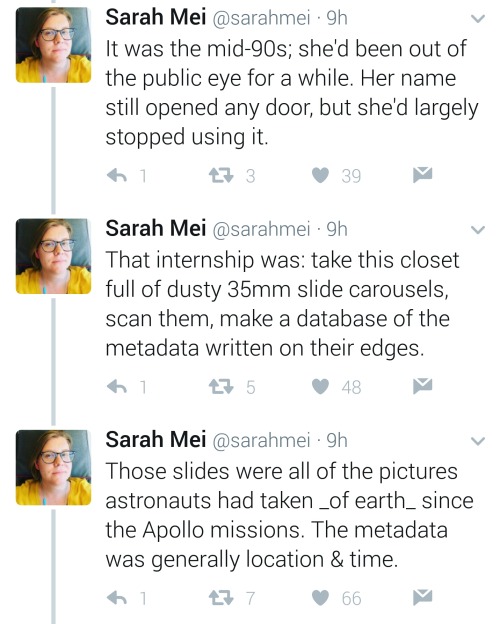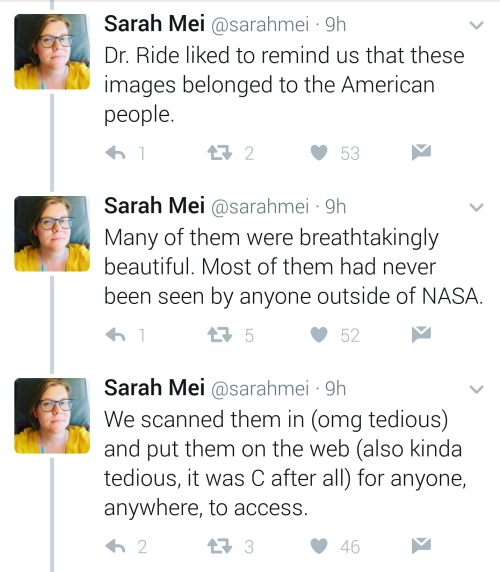Glossary

In November, a couple lovely people brought my attention to articles about a recent discovery that headlines consistently referred to as the ‘zombie star.’ What the heck is a zombie star? What makes it a zombie? I found a zombie star from 2014 in addition to the one in 2017 and I dug into the life cycle of the average star to get a sense of what undeath looks like in stars.
Below the cut are my sources, music credits, a vocab list, and the transcript of this episode. Suggest what you think I should research next by messaging me here, tweeting at me at @HDandtheVoid, or asking me to my face if you know me. Please subscribe on iTunes, rate it and maybe review it, and tell friends if you think they’d like to hear it! Also, welcome if you found me through PodCon!
(My thoughts on the next episode are the International Space Station, the transit of Venus, or astronaut training practices. The next episode will allegedly be up on New Year’s Day, January 1st. We’ll see about that.)
Glossary
Chandrasekhar limit - the upper limit for the mass of an astronomical body that can support extreme density without imploding: about 1.4 times the mass of our Sun. Any white dwarf star that has less than that mass will stay a white dwarf forever; any star that exceeds the Chandrasekhar limit will end in a supernova.
dwarf nova - a close binary system of a red dwarf, a white dwarf, and an accretion disk around the white dwarf. They brighten by 2 to 6 magnitudes depending on the stability of the disk, which loses material to the white dwarf. Categorized as a cataclysmic variable.
neutron star - a type of star that has gone supernova, when the surviving core is 1.5 to 3 solar masses and contracts into a small, very dense, very fast-spinning star.
nova - a close binary system of a white dwarf and a secondary star that’s a little cooler than the Sun. The system brightens 7 to 16 magnitudes in 1 to 100 days, and then the star fades slowly to the initial brightness over a period of several years or decades. At maximum brightness, it’s similar to an A or F giant star. Recurrent novae are similar to this category of variable but have several outbursts during their recorded history. Categorized as a cataclysmic variable.
pulsar - a type of neutron star that spins very, very fast. Also a kind of variable star that emits light pulses usually between 0.0014 seconds and 8.5 seconds.
reflection telescope - reflects light rays off the concave surface of a parabolic mirror to get an image of a distant object. Higher contrast image, worse color quality.
spectroscopy - the study of light from an incandescent source (or, more recently, electromagnetic radiation and other radiative energy) that has its wavelength dispersed by a prism or other spectroscopic device that can disperse an object’s wavelength. The spectra of distant astronomical objects like the Sun, stars, or nebulae are patterns of absorption lines that correspond to elements that these objects are made up of.
supernova - a massive star that explodes with a magnitude increase of 20 or more. Supernovae have led us to realize that the expansion of the Universe is accelerating.
supernova progenitors - the kinds of stars and conditions that will result in certain types of supernovae.
white dwarf star - a star that has exhausted all of its nuclear fuel (i.e. no longer has hydrogen to convert into helium through nuclear fusion). It is the hot, dense core of a star. Unless it is acquiring/accreting matter from a nearby star, it will cool over time and become a dead star.
Script/Transcript
Sources
Chandrasekhar limit via PBS, Jan 2012
“The Chandrasekhar Limit is therefore not just as upper limit to the maximum mass of an ideal white dwarf, but also a threshold. A star surpassing this threshold no longer hoards its precious cargo of heavy elements. Instead, it delivers them to the universe at large in a supernova that marks its own death but makes it possible for living beings to exist.”
Type I and Type II supernovae via Space.com
Type Ia supernovae via Swinburne University of Technology
Type Ia Supernova Progenitors via Swinburne University of Technology
Zombie star via NASA, Aug 2014
Curtis McCully “I was very surprised to see anything at the location of the supernova. We expected the progenitor system would be too faint to see, like in previous searches for normal Type Ia supernova progenitors. It is exciting when nature surprises us.”
The abstract of the article McCully and his team wrote on Type 1ax supernovae via Nature Magazine, Aug 2014
Zombie star via CNN, Nov 2017
Arcavi: "My first thought was that this must be some nearby star in our galaxy, just varying its brightness. But when we got the first spectrum of it, we saw that it was in fact a supernova 500 million light-years away. My mind was blown. The fact that it got bright and dim five times was very unusual. We'd never seen a supernova do that before."
Arcavi: "This means that we still have a lot to learn about how massive stars evolve and how they explode."
Robert Evans via Sky and Telescope, Sept 2005
2017 zombie star articles I didn’t use because there were too many of them:
Air and Space Magazine, Nov 2017
The Atlantic, Nov 2017
BBC News, Nov 2017
BGR, Nov 2017
Carnegie Science, Nov 2017
Earth Sky, Nov 2017
Express UK, Nov 2017
The Guardian, Nov 2017
Intro Music: ‘Better Times Will Come’ by No Luck Club off their album Prosperity
Filler Music: 'Toll Free’ by the Shook Twins off their album What We Do
Outro Music: ‘Fields of Russia’ by Mutefish off their album On Draught
More Posts from Fillthevoid-with-space and Others

LUCIDA
[noun]
the brightest star in a constellation.
Etymology: from the full phrase in Latin stella lūcida meaning “bright star”. Lucida can be traced to the Latin verb lūcēre, "to shine,“ from lux, "light.”
[Tim Barton - Amber of the Void]










Equal opportunity benefits can be far-reaching
https://twitter.com/sarahmei/status/818682610712866817

After spending a month attached to the ISS, the Dragon spacecraft succesfully lands in the pacific and is shipped back to land.
via reddit

HELIACAL
[adjective]
pertaining to or occurring near the sun, especially applied to such risings and settings of a star as are most nearly coincident with those of the sun while yet visible.
Etymology: Late Latin hēliac(us) < Greek hēliakós.
[Luis Tamani - Luz Solar]




Check out the makeshift pinhole-camera results from 99% totality! Leaves and my own hands work quite nicely to get an image of the little sliver of sunlight that was left. I had eclipse glasses but don't have any pictures from them: 99% is still not enough to reduce the sun's light very much. It got a little gloomier and I talked about it on Twitter but otherwise it was pretty uneventful! I'm glad I'm not on the road home from eclipsing. It would be cool to see totality one day, though.

I’ve gotten some feedback that episodes can be too technical. Unfortunately, that feedback came too late to save you from this week’s episode, which requires me to summarize the electromagnetic spectrum, radio astronomy, a concept called interferometry, and government regulations to talk about the topic that originally started me on this path: radio quiet zones. Please, bear with me! Pardon my mess! It was all very interesting stuff, I couldn’t resist digging into it.
Below the cut are my sources, music credits, a vocab list, a timeline of the astronomers I mention, and the transcript of this episode. I’ve bolded those sources I mention in the podcast, including the podcast that started me on this topic: The Adventure Zone! Please let me know what you think I should research next by messaging me here, tweeting at me at @HDandtheVoid, or asking me to my face if you know me. I’d love it if you would subscribe on iTunes, rate my humble little podcast and maybe review it, and tell friends if you think they’d like to hear it!
(My thoughts on the next episode are SOFIA, which you need to listen to find out what it stands for, or the pilot Chuck Yaeger. The next episode will go up February 26th.)
Glossary
aperture synthesis - the process of collecting electromagnetic radiation from a variety of separate, small telescopes and then combining this data to recreate the image at a higher resolution than would be possible with a single telescope.
frequency - the number of times a wave oscillates up and down per second.
hertz - the number of times an electromagnetic wave cycles per second. One cycle per second is 1 hertz.
interferometry - a group of techniques to extract information from superimposing electromagnetic waves to create interference. In radio astronomy, this is done by using a wide spread of receivers to look at the same distant object, then bringing that data together with a correlator that can create a larger, clearer picture than an individual radio telescope alone could.
radiation - energy that travels and spreads out as it goes.
Script/Transcript
Timeline
Joseph-Louis Lagrange, French (1736-1813)
Armand-Hippolyte-Louis Fizeau, French (1819-1896)
Edward W. Morley, American (1838-1923)
Albert A. Michelson, American (1852-1931)
Sir Martin Ryle, British (1918-1984)
Bernard Yarnton Mills, Australian (1920-2011)
Derek Vonberg, British (1922-2015)
Antony Hewish, British (1924- )
Sources
Electromagnetic spectrum via NASA
Observatories across the EM spectrum via NASA
Fermi satellite via NASA
The Neil Gehrels Swift Observatory via NASA
NuSTAR via Caltech
NuSTAR via NASA
Chandra X-Ray Observatory via Harvard
The Galaxy Evolution Explorer (GALEX) via Caltech
Kepler satellite via NASA
Hubble Space Telescope via NASA
Spitzer satellite via Caltech
Stratospheric Observatory for Infrared Astronomy (SOFIA)
Planck satellite via ESA
Spekt-R Radioastron from Russia
High Energy Stereoscopic System (HESS)
W. M. Keck Observatory on Mauna Kea
South Africa Large Telescope (SALT) in Namibia
The Combined Array for Research in Millimeter-Wave Astronomy (CARMA) via Caltech
CARMA public page (decommissioned)
Very Large Array (VLA) via NRAO
Space radio telescope (1997) via NRAO
Highly Advanced Laboratory for Communications and Astronomy (HALCA) via NASA
A timeline of the history of radio interferometry via University of Groningen (Netherlands)
Interferometers via the LIGO Laboratory
Michelson-Morley Experiment via University of Virginia
Astronomical Interferometry via Magdalena Ridge Observatory
Interferometry via XKCD
How Radio Works via How Stuff Works
Radio Spectrum Allocation via the Federal Communications Commission
Interferometry via the European Space Observatory
National Radio Quiet Zone via National Radio Astronomy Observatory
“minimize possible harmful interference to the National Radio Astronomy Observatory (NRAO) in Green Bank, WV and the radio receiving facilities for the United States Navy in Sugar Grove, WV.”
National Radio Quiet Zone via CNN
“Tucked in the Allegheny Mountains, researchers are listening to exploding galaxies at the edge of the universe – a signal that is so faint, it’s about a billionth of a billionth of a millionth of a watt.”
The Quiet Zone: Where mobile phones are banned via BBC News (May 2015)
Enter The Quiet Zone: Where Cell Service, Wi-Fi Are Banned via NPR (Oct 2013)
Green Bank Observatory in West Virginia, USA
Karen O’Neil: “The types of energies we look at are less than the energy of a single snowflake falling on the Earth.”
Characteristics of radio quiet zones via International Telecommunication Union (Sept 2012)
“transmissions below 15 GHz are restricted within a certain radius around the Arecibo Observatory, located in Puerto Rico. Since no observations are carried out, nor are any expected to be carried out above that frequency in the future, no restrictions are needed on higher frequency transmissions. The reverse is not necessarily true, however. For example, some restrictions may be imposed on transmissions below 30 GHz in the neighbourhood of the large international ALMA observatory even though it is not expected to ever observe below that frequency, due to its susceptibility to interference at these lower frequencies in the signal path.”
“It is important to emphasize that a RQZ does not imply a complete absence of radio transmissions. The existence of, and coexistence with, a range of man-made devices will always be necessary. A RQZ may include options for notification of other users and for negotiation in mitigating interference. On the other hand, a RQZ does not consist entirely of mitigating techniques implemented by the radio astronomy facility; some level of control on externally-generated interference is intrinsic to a RQZ.
A RQZ is therefore a buffer zone that allows for the implementation of mechanisms to protect radio astronomy observations at a facility within the zone from detrimental radio frequency interference, through effective mitigation strategies and regulation of radio frequency transmitters.”
ALMA Observatory website
The Scientific Committee on Frequency Allocations for Radio Astronomy (IUCAF) website
Google Map of worldwide radio quiet zones (Aug 2016)
ITU-R Recommendations of Particular Importance to Radio Astronomy by A. Richard Thompson
“the necessity of maintaining the shielded zone of the Moon as an area of great potential for observations by the radio astronomy service and by passive space research, and consequently of maintaining it as free as possible from transmissions.”
The Adventure Zone: Amnesty setup episode via Maximum Fun
Intro Music: ‘Better Times Will Come’ by No Luck Club off their album Prosperity
Filler Music: ‘Junkyard Chandelier’ by Radical Face aka Ben Cooper, who primarily releases music as Radical Face but also has at least three other bands or band names he’s working with/has released music as.
Outro Music: ‘Fields of Russia’ by Mutefish off their album On Draught

This episode’s been a long time coming because the topic’s come up before. I originally conceived of this podcast as a way for me to learn about space things I’d always taken for granted, and truly, there is nothing closer to home that I’ve just agreed to believe than the statement that the tides are affected by the Moon. What? How? Why? All these questions and some I didn’t even realize I had will be answered in this episode on tidal forces!
Below the cut are my standard glossary, transcript, sources, and music credits. Send me any topic suggestions via Tumblr message (you don’t need an account for it!). You can also tweet at me on Twitter at @HDandtheVoid, or you can ask me to my face if you know me. Subscribe on iTunes to get the new episodes of my maybe now monthly-updated podcast (we’ll see how the weeks unfold), and please please please rate and review it. Go ahead and tell friends if you think they’d like to hear it, too!
(My thoughts on the next episode are Stephen Hawking and his theories, or famous comets. The next episode will go up in September—ideally, September 10th!)
Glossary
barycenter - the common center of mass between two objects that allows them to orbit.
Roche limit - the distance in which a celestial body will disintegrate because of a second celestial body's tidal forces exceeding the first body's gravitational self-attraction, or the force that’s holding it together. Within the Roche limit, orbiting material disperses and forms rings, like how Saturn’s rings are within the Roche zone; outside the limit, material tends to coalesce.
spaghettification - when extreme tidal forces pull an object apart in space.
tidal force - an apparent force (sometimes also called the differential force) that stretches a body towards another, more gravitationally-strong body’s center of mass. This can cause such diverse phenomena as tides, tidal locking, breaking celestial bodies apart to form ring systems within a Roche limit, and in extreme cases, spaghettification. It arises because the gravitational force exerted on one body by another is not constant across its parts: the nearest side is attracted more strongly than the farthest side.
Types of ocean tides:
diurnal tide - a daily tidal cycle with only one high and low tide each lunar day, and a period of a little over 24 hours.
meteorological tide - a tidal change due to weather patterns. Wind, or unusually high or low barometric pressure causes variations between the actual sea level and its predicted height.
mixed tide - a daily tidal cycle with two high and low tides that differ in their peaks. This difference in height between successive high or low tides is called the diurnal inequality. They have a period of 12 hours and 25 minutes.
neap tide - a type of bi-monthly tidal cycle that occurs when the Sun, Earth, and Moon are positioned at a 90-degree angle, so the tidal forces of the Sun are acting against the tidal forces of the Moon. During a neap tide, the difference between high tide and low tide is the least extreme.
semidiurnal tide - a daily tidal cycle with two nearly equal high tides and low tides every lunar day. They have a period of 12 hours and 25 minutes.
spring tide - a type of bi-monthly tidal cycle that occurs when the Sun, Earth, and Moon line up so that the gravitational forces of Sun and Moon are working together to form a large tidal bulge. During a spring tide, the difference between high tide and low tide is at its maximum.
tidal locking - when long-term interaction between two co-orbiting astronomical bodies causes at least one of the bodies to rotate in such a way that one face of the body is always pointed at the body it’s orbiting. This is also called gravitational locking or captured rotation. An example is that the same side of the Moon always faces the Earth, and its synchronous rotation means that it takes just as long to rotate around its own axis as it does to revolve around the Earth.
Script/Transcript
Sources
Tidal Cycles in Tides Explained via beltoforian.de
“a tide is a distortion in the shape of one body induced by the gravitational pull of another nearby object.”
Meteorological effects on tides via the New Zealand Government website
Tides and Water Levels via the National Oceanic and Atmospheric Administration (NOAA)
Tides by R. Nave, my dude, my guy, my friend and yours, of Georgia State University
The Tidal Force by Neil deGrasse Tyson via Hayden Planetarium (Nov 1995)
“A mild increase in distance between two objects can make a large difference in the strength of the tidal force. For example, if the Moon were just twice its current distance from us, then its tidal force on Earth would decrease by a factor of eight. At its current average distance of 240,000 miles from Earth, the Moon manages to create sizable atmospheric, oceanic, and crustal tides by attracting the part of Earth nearest the Moon more strongly than the part of Earth that is farthest. (The Sun is so far away that in spite of its generally strong gravity, its tidal force on Earth amounts to less than half that of the Moon.) The oceans respond most visibly in being stretched toward the direction of the Moon.”
“When Earth's rotation slows down until it exactly matches the orbital period of the Moon, then Earth will no longer be rotating within its oceanic tidal bulge and the Earth-Moon system will have achieved a double tidal lock. In what sounds like an undiscovered wrestling hold, double tidal locks are energetically favorable (like a ball coming to rest at the bottom of a hill), and are thus common in the universe.”
Forget “Earth-Like”—We’ll First Find Aliens on Eyeball Planets via Nautilus (Feb 2015)
High Tide on Io! via NASA (Mar 2012)
Tidal forces and spaghettification via NASA handout
Spaghettification via Cosmic Funnies
Single atoms feel tidal force via Physics World (May 2017)
Robbins, Tom. Still Life with Woodpecker. Bantam Books: New York, 1980.
“Being four times larger than the moon, the earth appeared to dominate. Caught in the earth’s gravitational web, the moon moved around the earth and could never get away. Yet, as any half-awake materialist well knows, that which you hold holds you.”
Sobel, Dava. The Planets. Viking: NY, 2005.
Intro Music: ‘Better Times Will Come’ by No Luck Club off their album Prosperity
Background Music: ‘Sad Business’ by Patients aka Ben Cooper, who primarily releases music as Radical Face but also has at least three other bands or band names he’s working with/has released music as.
Filler Music: ‘It’s Getting Boring by the Sea’ by Blood Red Shoes off their album Box of Secrets
Outro Music: ‘Fields of Russia’ by Mutefish off their album On Draught

(I broke the last link, whoops)
Another week of theory, but no fun new particles. Instead, hear me try to say a lot of names of scientists or their eponymous equations as I talk about dark energy in the universe! Learn what some astronomers think it is and why other astronomers think there are better explanations for certain nutty galactic phenomena.
Below the cut are my sources, music credits, a vocab list, and the transcript of this episode. Let your voice be heard and tell me what you think I should research next by messaging me here, tweeting at me at @HDandtheVoid, or asking me to my face if you know me in real life. And please subscribe to the podcast on iTunes, rate it and maybe review it, and tell friends if you think they’d like to listen!
(If anything about dark matter or dark energy or cosmic microwave background radiation confused you over the past few podcasts, for sure send me your questions so I can ask someone more qualified than me—my doctorate student friend! My thoughts on the next episode are still the Voyager golden records, space race history, the transit of Venus, the Moon landing, Edmond Halley, or Dark Sky Preserves and it will be up on November 20th.)
Glossary
baryons - heaviest particles. Ex. Protons, neutrons. In astroparticle physics, electrons are included in baryonic matter.
cosmic microwave background radiation - the electromagnetic radiation left over from the time of recombination in Big Bang cosmology.
dark energy - a theoretical force made up of unknown, undetectable energy. It is used to explain why the universe is expanding more rapidly over time instead of slowing its expansion.
dark matter - a theoretical mass made up of unknown particles that have not been created on Earth. It is used to explain why galaxy clusters have 10x the mass that their light output suggests they would have; why distant stars on the edges of spiral galaxies orbit at the same speed as stars near the center of the galaxy; and the accretion of gases that created galaxies at the beginning of the universe.
fundamental forces - four fundamental forces in our current model of the universe: the strong and weak nuclear forces, the electromagnetic force, and gravity.
gravitational lensing - when light from more distant sources passes near a massive star, galaxy, or galaxy cluster and the object’s gravity bends the light like a lens to provide a warped angle view of space.
Transcript
Sources
Dark energy via NASA
Dark energy via Hubble
“The strangeness of dark energy is thrilling.”
Fundamental forces via Georgia State University
Dark energy via Science Magazine (April 2017)
László Dobos: “We assume that every region of the universe determines its expansion rate itself.”
Dark energy and the South Pole Telescope via Smithsonian Magazine (April 2010)
“Knowing what dark matter is would help scientists think about how the structure of the universe forms. Knowing what dark energy does would help scientists think about how that structure has evolved over time—and how it will continue to evolve.”
Intro Music: ‘Better Times Will Come’ by No Luck Club off their album Prosperity
Filler Music: ‘Even The Darkness Has Arms’ by The Barr Brothers off their album The Sleeping Operator
Outro Music: ‘Fields of Russia’ by Mutefish off their album On Draught
Hahaha, right after I start out a podcast talking about how we’ll never poke the Sun, it turns out we’re sending a probe to do just that!
Solar System: Things to Know This Week
Mark your calendars for summer 2018: That’s when we’re launching a spacecraft to touch the sun.
In honor of our first-ever mission to the heart of the solar system, this week we’re delving into the life and times of this powerful yellow dwarf star.

1. Meet Parker
Parker Solar Probe, our first mission to go to the sun, is named after Eugene Parker, an American astrophysicist who first theorized that the sun constantly sends out a flow of particles and energy called the solar wind. This historic mission will explore one of the last regions of the solar system to be visited by a spacecraft and help scientists unlock answers to questions they’ve been pondering for more than five decades.

2. Extra SPF, Please
Parker Solar Probe will swoop within 4 million miles of the sun’s surface, facing heat and radiation like no spacecraft before it. The mission will provide new data on solar activity to help us better understand our home star and its activity - information that can improve forecasts of major space-weather events that could impact life on Earth.

3. Majorly Massive
The sun is the center of our solar system and makes up 99.8 percent of the mass of the entire solar system. If the sun were as tall as a typical front door, Earth would be about the size of a nickel.
4. Different Spin
Since the sun is not a solid body, different parts of the sun rotate at different rates. At the equator, the sun spins once about every 25 days, but at its poles the sun rotates once on its axis every 36 Earth days.

5. Can’t Stand on It
The sun is a star and a star doesn’t have a solid surface. Rather, it’s a ball of ionized gas 92.1% hydrogen (H2) and 7.8% helium (He) held together by its own gravity.
6. Center of Attention
The sun isn’t a planet, so it doesn’t have any moons. But, the sun is orbited by eight planets, at least five dwarf planets, tens of thousands of asteroids, and hundreds of thousands to trillions of comets and icy bodies.

7. It’s Hot in There
And we mean really, really hot. The temperature at the sun’s core is about 27 million degrees Fahrenheit. However, its atmosphere, the corona, can reach temperatures of 3 million degrees. (That’s as if it got hotter the farther away you got from a fire, instead of cooler!) Parker Solar Probe will help scientists solve the mystery of why the corona’s temperature is so much higher than the surface.

8. Travel Conditions
The sun influences the entire solar system, so studying it helps us better understand the space weather that our astronauts and spacecraft travel through.
9. Life on the Sun?
Better to admire from afar. Thanks to its hot, energetic mix of gases and plasma, the sun can’t be home to living things. However, we can thank the sun for making life on Earth possible by providing the warmth and energy that supply Earth’s food chain.
10. Chance of a Lifetime
Last but not least, don’t forget that the first total solar eclipse to sweep across the U.S. from coast-to-coast since 1918 is happening on August 21, 2017. Our toolkit has you need to know to about it.
Want to learn more? Read our full list of the 10 things to know this week about the solar system HERE.
Make sure to follow us on Tumblr for your regular dose of space: http://nasa.tumblr.com
-
 fillthevoid-with-space reblogged this · 7 years ago
fillthevoid-with-space reblogged this · 7 years ago
A podcast project to fill the space in my heart and my time that used to be filled with academic research. In 2018, that space gets filled with... MORE SPACE! Cheerfully researched, painstakingly edited, informal as hell, definitely worth everyone's time.
243 posts